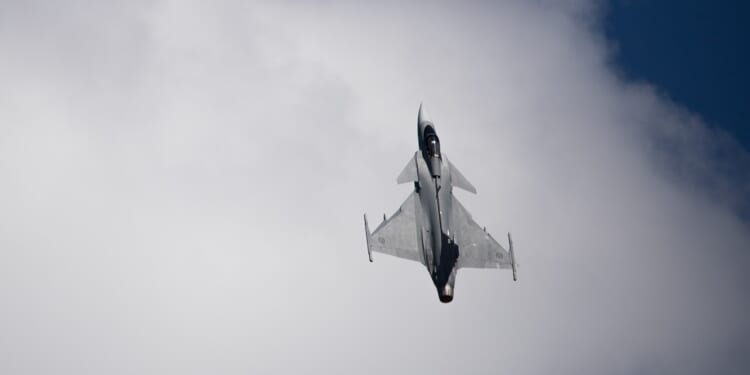Sweden had previously committed to supplying Ukraine with Gripen fighters after the conflict had ended, but it appears it has moved up its timeline.
In an interview with the BBC on Sunday, First Deputy Minister of Defense of Ukraine, Lieutenant General Ivan Havrylyuk, warned that Russia is poised to increase its airstrikes and said that more Western aircraft are desperately needed. Havrylyuk added that help is on the way and that Kyiv is expected to receive “additional deliveries of F-16 aircraft, as well as French Mirage and Swedish Gripen” jet fighters.
Although the general didn’t specify when Ukraine could receive the aircraft, this was the first time that the Saab JAS 39 Gripen was named directly as an aircraft slated for use in Ukraine. Stockholm had previously indicated it could supply Kyiv with the fighters once the war was resolved, but it now appears that the aircraft could arrive far sooner.
Ukraine Is Already Receiving F-16 and Mirage 2000 Fighters
Ukraine hasn’t disclosed how many F-16s or Mirage 2000 fighters it has received. Still, several NATO members, including Belgium, Denmark, the Netherlands, and Norway, have pledged to send between 85 and 95 of the American-made F-16 Fighting Falcons. At the same time, Paris has already provided an unspecified number of Mirage aircraft. A French parliamentary report indicated that six of the French Air and Space Force’s 26 Mirage 2000-5 aircraft would be provided; however, in August, reports emerged that the number of fighters could be increased to as many as 20.
The F-16s have already played a significant role in countering Russian cruise missile and drone strikes, and also in offensive counter-air missions. At the same time, the Fighting Falcon has been employed in ground attack operations. The Mirage 2000s have been used in similar roles, notably against Russian Shahed drones,
The Gripen Is Perfect for What Ukraine Needs
Kyiv has sought the Gripen since at least last year. However, Stockholm had previously agreed that any transfer would only begin after the end of hostilities and that it would be part of a rebuilding effort to guarantee Ukraine’s security going forward.
However, as peace talks have failed to materialize—even after Russian President Vladimir Putin’s high-profile meeting with US President Donald Trump in Alaska in August—there has been speculation that NATO members will seek to increase Ukraine’s defensive and offensive capabilities.
The issue for Sweden is how many fighters, if any, it can really spare. Currently, the Swedish Air Force operates under 100 JAS 39C/D models, with plans to modernize roughly half of those aircraft and upgrade its fleet with the newer JAS 39E variant.
Swedish Defense Minister Pål Jonsson had previously offered to provide Ukrainian pilots with “familiarization training” of the Gripen. Kyiv initially turned that offer down in July 2024, citing a need to focus on the F-16 program instead. It now appears that Stockholm may provide the aircraft sooner rather than later, increasing Kyiv’s capabilities.
The JAS-39 offers several advantages that could be ideal for Ukraine. The supersonic multirole fighter jet is capable of air combat and air-to-ground operations, while it can operate from austere facilities, including remote roads that have been converted into temporary runways. The Gripen is also equipped with reinforced landing gear that positions the airframe high above the ground, helping to prevent debris from being sucked into the jet engine’s air intake.
The JAS 39 was developed with low maintenance requirements, but can carry a variety of advanced munitions. It can be employed in air-to-air and air-to-ground missions, and is outfitted with modern avionics and advanced radar, which would further increase Ukraine’s capabilities. It remains to be seen, though, when Kyiv can receive the Gripen—and whether the Swedish fighter can make a difference in the skies over Ukraine.
About the Author: Peter Suciu
Peter Suciu has contributed over 3,200 published pieces to more than four dozen magazines and websites over a 30-year career in journalism. He regularly writes about military hardware, firearms history, cybersecurity, politics, and international affairs. Peter is also a contributing writer for Forbes and Clearance Jobs. He is based in Michigan. You can follow him on Twitter: @PeterSuciu. You can email the author: [email protected].
Image: Shutterstock / Karlis Miksons.

















